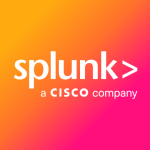What is our primary use case?
We use Microsoft Sentinel for centralized log aggregation and security management. Our environment uses a variety of security products to strengthen its security. This has made it difficult for the SOC team to analyze logs from different consoles and products. To ease the team's workload and help them prioritize events and attacks, we decided to acquire a centralized console. We chose Sentinel because it provides a centralized console where we can ingest and analyze logs. The logs that Sentinel analyzes add value.
How has it helped my organization?
Sentinel's threat visibility is good. It has analytics and threat detection capabilities that we can add to our own playbooks. We can use the predefined log analytics to create our own custom rules. Using these custom rules with predefined logs further improves our environment's security posture.
Sentinel helps us prioritize threats across our enterprise. When we have a lot of alerts and incidents, it is better to understand if they are false positives, because the SOC team sometimes wastes time on false positives, which are not very relevant. We must prioritize positive alerts, which should be given the highest priority. In order to solve this problem.
The manufacturing environment I work in is not very critical, so a simple attack is unlikely to have a major impact on the business. However, data is important in any business, and a data breach can damage our reputation. Therefore, it is important to have a good security posture to avoid threats. Threats and attacks can happen even with the highest level of security. Therefore, we look for products that can give us visibility into our environment and help us to proactively solve problems. Microsoft proactively identifies threats and informs its peers and partners. This allows us to take action to assess the impact of these threats on our environment. By taking proactive measures, we can prevent threats from harming our environment.
We also use Microsoft Defender for Cloud and Microsoft Defender for Identity. We have integrated these solutions with Microsoft Sentinel, and their logs are ingested by Sentinel. We do not incur any costs for ingesting Office 365 logs because Microsoft provides a free login exchange for Microsoft Office 365 and, I believe, for Defender as well into our Sentinel for analysis.
Our Microsoft products work seamlessly together to provide coordinated detection and response in our environment. We use a lot of Microsoft products, and it is best to use them in the same environment. This makes integration and collaboration easier. We also have licensing agreements that give us discounts when we use multiple products together. For example, we use Microsoft 365, OneDrive, and security products. We are also migrating our workloads to Azure. We have already migrated many workloads to Azure, and we are in the process of migrating the remaining workloads. We are heavily dependent on Microsoft, so we believe it is best to use one cloud provider. This makes it easier to manage different services. Additionally, Microsoft provides us with a lot of help and benefits, which can save us money. Cost is one of the factors that businesses consider, and IT is a major investment for businesses. Even though our business is not in the IT industry, IT plays a vital role in driving the business forward. Therefore, our organization needs to ensure that their IT investments are having a positive impact.
The comprehensiveness of the threat protection provided by our Microsoft security products is good. They have a large number of predefined indicators of compromise and a comprehensive team that monitors threats around the world. We receive notifications and newsletters from Microsoft whenever a new threat emerges. When an organization does not have experts on its team, it is very difficult to identify zero-day vulnerabilities or attacks. This makes it difficult for them to identify and mitigate these threats. Microsoft, on the other hand, proactively identifies threats and informs its teams and partners so that they can mitigate or prevent them in their environments.
Sentinel allows us to ingest data from our entire IT ecosystem, including network devices, servers, endpoints, and firewalls. This is important because if we are not monitoring all of our devices, we cannot know what threats they are facing or what attacks they have already been subjected to. Sentinel scans every device in the environment because it is difficult to see how many devices are compromised by a threat when we have an inventory of thousands of devices. This is why we need a centralized console where we can ingest all of our important logs and correlate them to identify threats. We need to know when our environment has been attacked by zero-day vulnerabilities. If we see that two devices have been affected, we still do not know how many additional devices the attack has compromised. This can only be known if we have all of our logs in our console. Sentinel provides us with a valuable capability: we can simply identify the source, user, or affected machines, and Sentinel will tell us how many machines have already been compromised and how far the threat has spread. This information allows us to isolate or quarantine the affected machines so that they cannot access more of our environment or steal more data.
We can react and respond holistically from one place with Sentinel.
The best part of Sentinel is its built-in SOAR, user and entity behavior analytics, and threat intelligence capabilities, which collaborate with the SIEM. Other products typically sell these capabilities as separate products. When we automate tasks, we reduce the team's manual effort. Whenever we detect an attack or need to provide analytics, we generate a lot of events and alerts. If we don't correlate these events and automatically resolve them, repetitive tasks will have to be performed by team members. This is not an efficient use of resources. Repetitive tasks can be automated by writing scripts and putting them into the system. Sentinel correlates events and creates incidents for us. These incidents can be resolved by scripts, such as by informing users that their IDs have been compromised and they need to reset their passwords or their IDs will be blocked. This saves SOC time so that they can focus on more important tasks, such as detecting and responding to threats that are already impacting the environment. Sentinel's features help organizations reduce manual and repetitive effort.
Sentinel has helped our organization by providing seamless collection and correlation of all logs. It is important to correlate logs into alerts and then to incidents, as this prevents the team that receives the alerts from becoming overloaded. Sentinel's analytics capabilities are also beneficial, as they allow me to easily perform searches and analyses of incidents. I do not have to spend much effort to determine the source of an incident, its impact, or how far it has spread through our environment. Additionally, Sentinel's automation features, such as its playbooks, templates, and integrations, help us to reduce manual effort.
Automating routine tasks that help find high-value alerts reduces the cost and workload of our SOC team. We have created several automation use cases by discussing them with multiple stakeholders and analyzing how frequently we receive the same type of incident alerts. When we receive the same type of incident alerts, we can correlate them and create scripts or automate solutions to resolve them. This helps to reduce the team's workload and headaches. We have already incorporated this automation into our SOC processes. If an incident is created, it is automatically resolved without any user or machine interaction. If we receive an alert that the resolution failed, some team members investigate the cause, such as a missing or disabled user ID or a technical system issue.
Automation has reduced our manual tasks, saving us around 30 percent of our time so that we can focus on more important tasks.
Previously, when I joined the organization, they were using Splunk on-premises and other security tools, such as Trend Micro and Darktrace devices, to collect logs. The security operations center team had to log into each console to see the logs, investigate them, and determine how to mitigate the alerts. This process was slow and inefficient, especially in the event of a critical attack. Sentinel provides a centralized console for log collection and analysis which helps the SOC team respond to alerts more quickly and reduce the impact of threats.
Microsoft Sentinel helped us eliminate the need for multiple dashboards by providing a single XDR dashboard. They have data connectors that can integrate with different security tools because they partner with other security companies to provide us with the functionality we need to integrate into our environment. Microsoft is at its best when we can integrate with our peers and security companies that are bringing new features to improve our security posture. We can then integrate these features with Sentinel, benefit from them, and ingest our logs into Sentinel as well. We no longer need to log in to multiple security tools; we can simply go to Sentinel, view the incidents and alerts that are being generated, and take action.
What is most valuable?
The automation feature is valuable. There are many events that happen, and we require manual effort from our SOC team to mitigate each one. When we started automating tasks, it helped us to reduce the time it takes to react to attacks. Attacks may not be able to penetrate our environment as easily because of this. Therefore, I believe that Sentinel's automation is the best.
What needs improvement?
The integration is not that difficult. The configuration is simple, but the data connector documentation is lacking in useful information. If Microsoft improves the documentation, we will be able to see how to complete the integration from start to finish. In the past, we have encountered problems during the integration process because the documentation was incomplete. For example, we recently deployed Microsoft Defender for Identity with the help of our Active Directory team. Initially, they told us that only a few ports were required, but later they said that more ports were needed. Our environment did not allow these additional ports, and we were not aware of this requirement. This delayed the project and caused frustration for our team members. The customer also expected the project to be completed sooner, but unexpected firewall rules and undocumented configuration requirements prevented us from doing so. We had to open a case with Microsoft for assistance, and we were eventually able to resolve the issue.
The playbook is a bit difficult and could be improved. For those who do not have a deep understanding of playbooks or programming languages, it would be better to have extensive documentation and information available online. When I started working with Sentinel, there were times when we had to refer to the documentation to get information about the configuration or implementation steps. If we encountered errors in the implementation, we had to rely on the internet to figure out how to fix them. The information available online is not that comprehensive and does not cover specific maintenance tasks. If the documentation were improved a bit, and the playbook and automation were made easier to use, it would be a great benefit for technical users.
The AI and Machine Learning can be improved.
For how long have I used the solution?
I have been using Microsoft Sentinel for over one year.
What do I think about the stability of the solution?
I have not seen any downtime with Sentinel. Sentinel is stable.
What do I think about the scalability of the solution?
Sentinel is highly scalable. We can easily integrate more devices without any effort. Microsoft has a large data center, and they are always ready to add our devices.
How are customer service and support?
Microsoft technical support has declined in quality over the years. I have only been using Sentinel for a year, but I have experience with Microsoft technical support through Azure and other Microsoft products. In the past, we were able to resolve tickets quickly with minimal back-and-forth. However, recently, the quality of support has degraded. We had a few critical cases that directly impacted production, but Microsoft did not assign their senior engineers to these cases. This wasted a lot of our time, as we had to explain the problems to multiple support representatives.
How would you rate customer service and support?
Which solution did I use previously and why did I switch?
We previously used Splunk SOAR in conjunction with Trend Micro and Darktrace to ingest logs, but we switched to Sentinel because it is more seamless.
How was the initial setup?
The initial setup was successful. The configuration is not difficult. There were some challenging areas. However, we had access to free tools and a Microsoft contact who was always available to help us if we encountered any knowledge gaps. When setting up Sentinel for the first time in our environment, we always have an expert with us to assist with the setup, as not everyone has extensive knowledge of implementing the product. The expert is there to help us with the implementation if we get stuck on a step.
We decided which devices and types of alerts or information we wanted to ingest. At that time, we were not using automation. Our environment was in poor condition, and we were not utilizing the automated features of Sentinel. We only required the basic features of Sentinel, which were to ingest logs from the devices we were interested in, correlate them, analyze them, and integrate them with our service tools and alerting. For alerting, we used ServiceNow as our ticketing system. We would receive a ticket from ServiceNow for the SOC team, and then the SOC team would investigate and mitigate the issue. However, as time went on, the number of events increased, and the time it took to investigate them also increased. If we did not automate our environment, we would have to keep increasing the size of our SOC team or the number of SOC members to handle the workload. We could not meet the priority requirements. That is when we proposed using some of the automation features to help with low-priority alerts.
The deployment required three to four people. I joined the team for the implementation phase. So, by the time I joined, a lot of decisions had already been made, and a low-level plan had been decided upon. This was a low-level design and plan that we had to follow.
What about the implementation team?
We had help from our Microsoft representative for the implementation. This contact was provided to us by Microsoft from the initial trial period all the way through the implementation.
What's my experience with pricing, setup cost, and licensing?
Currently, given our use case, the cost of Sentinel is justified, but it is expensive. It is not so cheap that any organization can afford it. However, if an organization has a requirement for good security posture and can invest in security tools, they should have at least a decent budget to afford Sentinel. Sentinel does offer good features, such as SIEM, SOAR, and automation. However, we need to monitor our budget because ingestion can increase at any time and exceed our budget. We can set alerts to notify us if our budget is increasing significantly on a monthly or yearly basis. We can then control our budget by adjusting what we ingest. We can ingest any amount of data because there is a lot of data flowing in. However, some data is not necessary to ingest because it is not valuable to our analytics. Therefore, being careful about what data we ingest through Sentinel will help us stay within our budget.
Which other solutions did I evaluate?
We evaluated IBM QRadar and Splunk. Splunk has been in the market for a long time and is trusted by many organizations. While it was once a leader in its field, it does not seem to be keeping up with new features and automation. However, I am not aware of their current state of development.
We saw good features in both Splunk and QRadar, but QRadar had more features that were relevant to us. However, we are moving more towards the cloud. Previously, we had on-premises infrastructure, but we migrated to Azure when a new management team came in.
When we evaluated Microsoft Sentinel, we found that it had good functionality and met our requirements. We also liked that it is a cloud-based solution, so we do not have to worry about underlying hardware, features, operating systems, or management. We simply need to configure the application, which is relatively straightforward. We also do not need to make any upfront capital expenditures.
However, we need to consider the cost of ingesting logs into our environment. Microsoft charges for the amount of data ingested per day, so we need to keep our costs within budget.
QRadar is more complex and difficult to configure than Sentinel. Sentinel is easy to expand. If we add new devices to our environment, we can simply connect them directly to Sentinel. We do not need to worry about additional hardware or configuration.
Overall, Sentinel is a good choice for us because it is cloud-based, easy to configure, and scalable.
What other advice do I have?
I would rate Microsoft Sentinel an eight out of ten.
Whether to use separate SIEM and SOAR solutions or Microsoft Sentinel depends on each organization's specific needs. All SIEM and SOAR tools are expensive because they provide essential security features. Organizations with the resources to pay for these features may choose to purchase Sentinel or another SIEM or SOAR solution. However, small and medium-sized businesses may not be able to afford these tools. Instead, they may choose to use a third-party service provider that already has a license for an SIEM solution such as QRadar or Sentinel.
Sentinel ingests data from over 1,500 endpoints, including technical devices, Windows devices, and Linux devices in our environment.
There is no maintenance required on our end. Microsoft is doing everything for us. We only have to have our configurations in place.
Before using Sentinel, organizations should clearly understand their use cases and requirements. They can take a trial of Sentinel and collaborate with Microsoft to create use cases that demonstrate the value of the investment. Because there are thousands of SIEM and SOAR tools on the market, organizations should evaluate multiple solutions to see what benefits they offer. They can then create use cases for each solution in their environment and take trials to implement them. Organizations should compare the solutions based on visibility, budget, and additional features. Anyone who is considering using a SIEM or SOAR solution should evaluate multiple solutions. Budgeting is very important.
Which deployment model are you using for this solution?
Public Cloud
If public cloud, private cloud, or hybrid cloud, which cloud provider do you use?
Microsoft Azure
Disclosure: PeerSpot contacted the reviewer to collect the review and to validate authenticity. The reviewer was referred by the vendor, but the review is not subject to editing or approval by the vendor.















